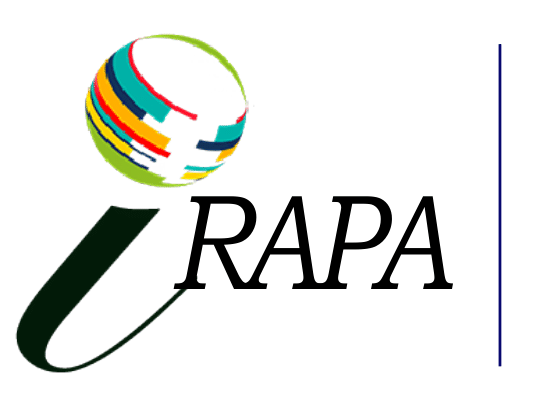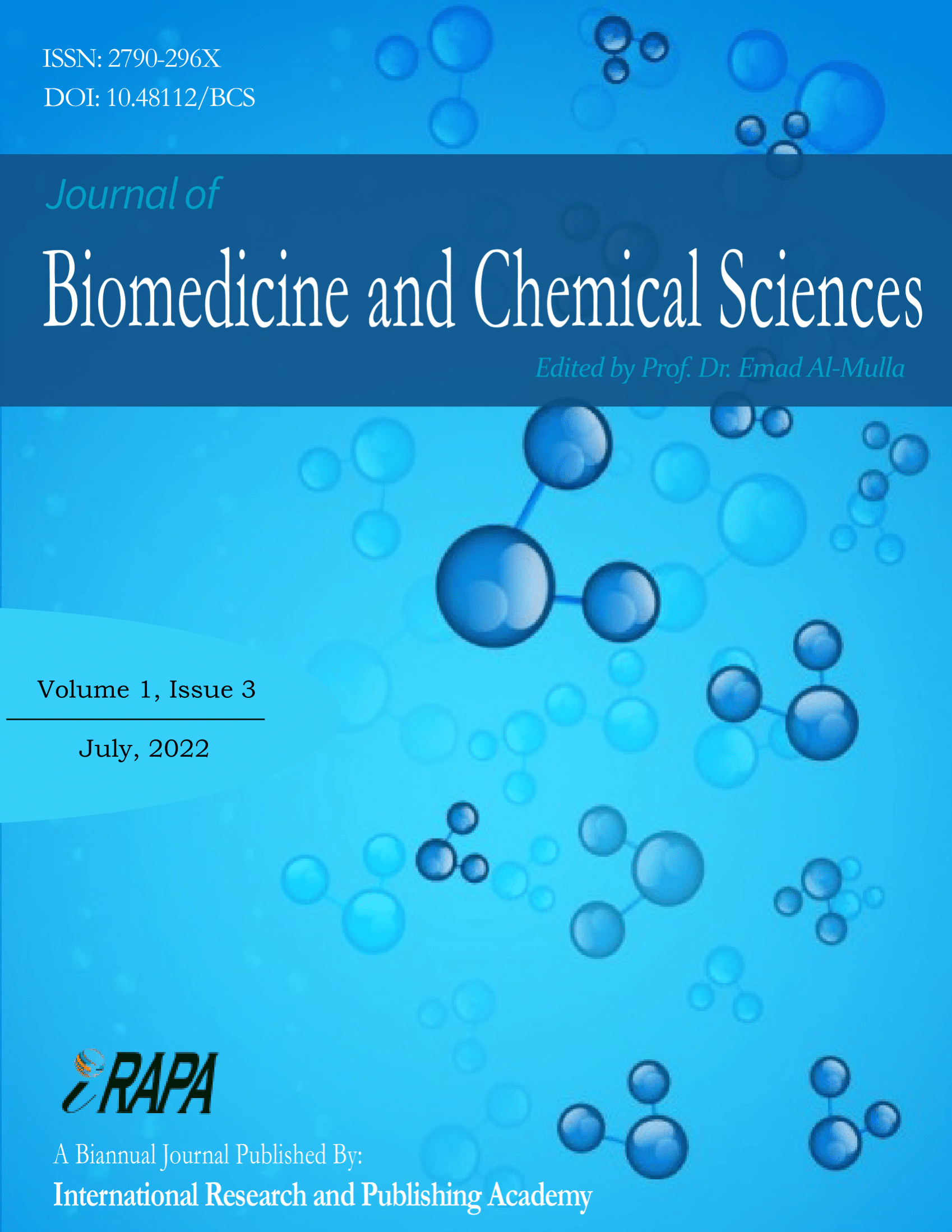A new metal-free macrocyclic Schiff base ligand bearing two metal cavities incorporated with two sets of N3O2 donor atoms derived from 2, 6-diaminopyridine and isatine was synthesized. The new ligand was used to prepare homo and hetero binuclear macrocyclic Schiff base complexes with Ni (II), Cu (II), ZrO (II) and Ba (II) metal ions. The ligand and metal complexes were characterized using Fourier transform infrared (FT-IR), UV–vis, mass spectroscopy, elemental analysis (CHN), thermo gravimetric analysis (TGA), magnetic susceptibility, and molar conductivity measurements. The DFT calculations using the B3LYP functional method have been applied to obtain the geometry and electronic properties of the ligand and its metal complexes to support the experimental data. To describe the reactivity of the title molecules, the HOMO and LUMO levels and Mulliken atomic charges were determined.

- Alkam, H. H., Atiyah, E. M., Majeed, N. M., & Alwan, W. M. (2021). Cupper (ii) and mercury (ii) complexes with schiff base ligands from benzidine with isatin and benzoine: synthesis, spectral characterization, thermal studies and biological activities. Systematic Reviews in Pharmacy, 12(1).
- Archibald, S. J. (2009). Coordination chemistry of macrocyclic ligands. Annual Reports Section" A"(Inorganic Chemistry), 105, 297-322. https://doi.org/10.1039/B818281G
- Arshad, M., Jadoon, M., Iqbal, Z., Fatima, M., Ali, M., Ayub, K., ... & Mahmood, T. (2017). Synthesis, molecular structure, quantum mechanical studies and urease inhibition assay of two new isatin derived sulfonylhydrazides. Journal of Molecular Structure, 1133, 80-89. https://doi.org/10.1016/j.molstruc.2016.11.065
- Beckmann, U., & Brooker, S. (2003). Cobalt (II) complexes of pyridazine or triazole containing ligands: spin-state control. Coordination chemistry reviews, 245(1-2), 17-29. https://doi.org/10.1016/S0010-8545(03)00030-4
- Bitu, M. N. A., Hossain, M. S., Zahid, A. A. S. M., Zakaria, C. M., & Kudrat-E-Zahan, M. (2019). Anti-pathogenic activity of cu (II) complexes incorporating Schiff bases: a short review. American Journal of Heterocyclic Chemistry, 5(1), 11-23. https://doi.:10.11648/j.ajhc.20190501.14
- Borisova, N. E., Reshetova, M. D., & Ustynyuk, Y. A. (2004). Binuclear and polynuclear transition metal complexes with macrocyclic ligands. 3. New polydentate macrocyclic ligands in reactions of 4-alkyl-2, 6-diformylphenols with 1, 2-diaminobenzenes. Russian Chemical Bulletin, 53(1), 181-188. https://doi.org/10.1023/B:RUCB.0000024848.03470.25
- Bottei, R. S., & Quane, D. (1964). Preparation and thermal stability of some divalent metal chelate polymers of β-hydronaphthazarin. Journal of Inorganic and Nuclear Chemistry, 26(11), 1919-1925. https://doi.org/10.1016/0022-1902(64)80017-8
- Ceramella, J., Iacopetta, D., Catalano, A., Cirillo, F., Lappano, R., & Sinicropi, M. S. (2022). A review on the antimicrobial activity of schiff bases: Data collection and recent studies. Antibiotics, 11(2), 191. https://doi.org/10.3390/antibiotics11020191
- Chandra, S., & Kumar, R. (2004). Synthesis and spectral studies on mononuclear complexes of chromium (III) and manganese (II) with 12-membered tetradentate N2O2, N2S2 and N4 donor macrocyclic ligands. Transition Metal Chemistry, 29(3), 269-275. https://doi.org/10.1023/B:TMCH.0000020359.84853.72
- Chandra, S., Gupta, R., Gupta, N., & Bawa, S. S. (2006). Biologically relevant macrocyclic complexes of copper spectral, magnetic, thermal and antibacterial approach. Transition Metal Chemistry, 31(2), 147-151. https://doi.org/10.1007/s11243-005-6194-5
- Chu, Z., Huang, W., Wang, L., & Gou, S. (2008). Chiral 27-membered [3+ 3] Schiff-base macrocycles and their reactivity with first-row transition metal ions. Polyhedron, 27(3), 1079-1092. https://doi.org/10.1016/j.poly.2007.12.003
- Cifelli, M., Domenici, V., & Veracini, C. A. (2013). Recent advancements in understanding thermotropic liquid crystal structure and dynamics by means of NMR spectroscopy. Current Opinion in Colloid & Interface Science, 18(3), 190-200. https://doi.org/10.1016/j.cocis.2013.03.003
- Dileepan, A. B., Prakash, T. D., Kumar, A. G., Rajam, P. S., Dhayabaran, V. V., & Rajaram, R. (2018). Isatin based macrocyclic Schiff base ligands as novel candidates for antimicrobial and antioxidant drug design: In vitro DNA binding and biological studies. Journal of Photochemistry and Photobiology B: Biology, 183, 191-200. https://doi.org/10.1016/j.jphotobiol.2018.04.029
- Gliemann, G. A. B. P. (1985). ABP Lever: Inorganic Electronic Spectroscopy, Vol. 33 aus: Studies in Physical and Theoretical Chemistry, Elsevier, Amsterdam, Oxford, New York, Tokio 1984. 863 Seiten, Preis: $113, 50. https://doi.org/10.1002/bbpc.19850890122
- Gull, P., Babgi, B. A., & Hashmi, A. A. (2017). Synthesis of Ni (II), Cu (II) and Co (II) complexes with new macrocyclic Schiff-base ligand containing dihydrazide moiety: Spectroscopic, structural, antimicrobial and antioxidant properties. Microbial Pathogenesis, 110, 444-449. https://doi.org/10.1016/j.micpath.2017.07.030
- Ikotun, A. A., Oladimeji, A. O., & Oluranti, O. O. (2019). Synthesis, Physicochemical and Antimicrobial Properties of Co (II) and Ni (II) metal complexes of the Schiff base of isatin and 4-methylaniline. Journal of Applied Sciences and Environmental Management, 23(11), 1957-1962. https://dx.doi.org/10.4314/jasem.v23i11.8
- Kilpin, K. J., Henderson, W., & Nicholson, B. K. (2007). Synthesis, characterisation and biological activity of cycloaurated organogold (III) complexes with imidate ligands. Polyhedron, 26(1), 204-213. https://doi.org/10.1016/j.poly.2006.08.009
- Ma, W., Tian, Y. P., Zhang, S. Y., Wu, J. Y., Fun, H. K., & Chantrapromma, S. (2006). Synthesis and characterization of 1, 8-bis (ferrocenylmethyl)-5, 5, 12, 12, 14-hexamethyl-1, 4, 8, 11-tetraazacyclotetradecane, a macrocyclic ligand and its complexes. Transition Metal Chemistry, 31(1), 97-102. https://doi.org/10.1007/s11243-005-6336-9
- Mohapatra, R. K., Ghosh, S., Naik, P., Mishra, S. K., Mahapatra, A., & Dash, D. C. (2012). Synthesis and Characterization of Homo Binuclear Macrocyclic Complexes of UO 2 (VI), Th (IV), ZrO (IV) and VO (IV) with Schiff-Bases Derived from Ethylene diamine/Orthophenylene Diamine, Benzilmonohydrazone and Acetyl Acetone. Journal of the Korean Chemical Society, 56(1), 62-67. https://doi.org/10.5012/jkcs.2012.56.1.062
- Nakamoto, K. (2009). Infrared and Raman spectra of inorganic and coordination compounds, part B: applications in coordination, organometallic, and bioinorganic chemistry. John Wiley & Sons. https://doi.org/10.1002/0470027320.s4104
- Nockemann, P., Thijs, B., Postelmans, N., Van Hecke, K., Van Meervelt, L., & Binnemans, K. (2006). Anionic rare-earth thiocyanate complexes as building blocks for low-melting metal-containing ionic liquids. Journal of the American Chemical Society, 128(42), 13658-13659. https://doi.org/10.1021/ja0640391
- Racles, C., Silion, M., Arvinte, A., Iacob, M., & Cazacu, M. (2013). Synthesis and characterization of poly (siloxane–azomethine) iron (III) coordination compounds. Designed Monomers and Polymers, 16(5), 425-435. https://doi.org/10.1080/15685551.2012.747161
- Sherzaman, S., Ahmed, M. N., Khan, B. A., Mahmood, T., Ayub, K., & Tahir, M. N. (2017). Thiobiuret based Ni (II) and Co (III) complexes: synthesis, molecular structures and DFT studies. Journal of Molecular Structure, 1148, 388-396. https://doi.org/10.1016/j.molstruc.2017.07.054
- Silverstein, R. M., & Bassler, G. C. (1962). Spectrometric identification of organic compounds. Journal of Chemical Education, 39(11), 546. https://doi.org/10.1021/ed039p546
- Tušek-Božić, L., Marotta, E., & Traldi, P. (2007). Efficient solid-state microwave-promoted complexation of a mixed dioxa-diaza macrocycle with an alkali salt. Synthesis of a sodium ethyl 4-benzeneazophosphonate complex. Polyhedron, 26(8), 1663-1668. https://doi.org/10.1016/j.poly.2006.12.012
- Venkatesh, R., & Geetha, K. (2015). Synthesis and Spectroscopic Investigation of Novel Nickel (II) Complexes from Pentadentate Schiff Base Ligand. SOJ Materials Science & Engineering, 3(2), 1-5. http://dx.doi.org/10.15226/sojmse.2015.00121











